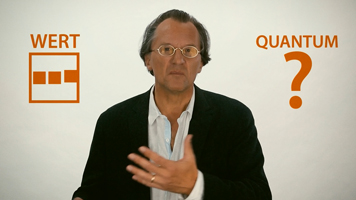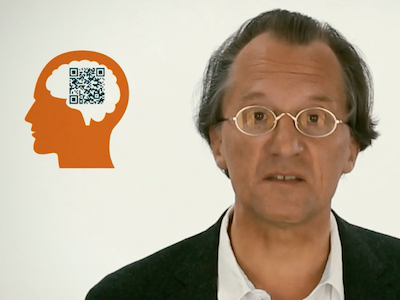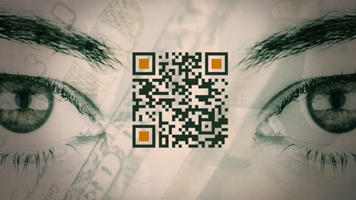Money, thing without qualities

Money is both real and unreal at the same time
Money – it’s as real as only something real can be. And at the same time it’s unreal, just an imaginary lump, something we just conjure up — something in fact that we must imagine since it otherwise consists of nothing real. That sounds like a contradiction; it seems impossible. But it’s not only possible; it’s at the very core of money – and it’s extremely important to recognize this.
With every sale and purchase, with everything bearing a price tag, every time a payment arises, we must think in money. Because we also must think in terms of value and what an apple costs, the apple’s price in terms of what we earn with our work and what it means when the price tag reads 29.90.
Naturally, in all these instances the issue is the amount. It’s always about how much something costs, or brings in. Money and monetary value always relate to a certain amount, a specific number, a quantity. But a quantity of what actually? Answer: value. Value as a quantity of value? That doesn’t say much. But there’s a reason. Because value in the terms we must think here doesn’t consist of something tangible. It exists only as a thought. We think of value as value – and that’s what it consists of. It is, in the highest sense, a creation of our thoughts, formed by our thoughts.
Of course, we don’t think just because we like to. No, we must conceive value, and how we do that is strictly prescribed. When we go into a store, we know we can’t just take that box of noodles with us, even if the clerk smiles in such a friendly manner. No, we know we have to buy the noodles – that’s the rule, that’s the law – and powerful authorities stand by to make sure that we do so. We know the box of noodles – like much else – is to be paid for. It has a value that must be paid if we want to take the noodles from the store. And we know that we have sufficient money, hopefully, with us. On both sides of the transaction, in the box of noodles and in the sum of money to buy it, we know value. With both, we have to think value, both sides with the same unit – a unit that otherwise consists of nothing, nothing but its usefulness for this kind of exchange, buying and selling.
We must conceive value

In this respect, value is of course something, indeed something very powerful, but in itself it consists of nothing. And now the question: what do we have to think when we’re thinking this value – monetary value or exchange value? What must our thinking accomplish, what does it have to form here? Paradoxically, it must conjure a quantity of something that can’t be grasped in the hand. Value has no shape; it’s not round, not wide, not long. Rather it’s invisible, silent, without taste and ungraspable. Value has no qualities. It is in no way fixed or fixable, except that it’s expressed as a quantum. But it’s not a quantity of something, rather value is a pure quantity in and of itself.
So this is how we think value. And here’s an important flash: it seems we’re actually quite capable of thinking this way! In an instant, our thoughts can form something that in itself has no trace of qualitative features, no shadow of any attributes.

We can think of everything in the world as value
This is already something very special because, consider: Nothing else in life demands this of our minds. Everything else has its qualities, characteristics and content; only monetary value doesn’t. With value, something quite exceptional is asked of us. But it’s also so very commonplace, this demand, every day and many, many times every day. So this remarkable way of thinking is normal for us, as simple as it is reflexive.
But there’s even more to these oddities. For example, we read the number in the bank statement that says how much we have in our account, but we don’t imagine coins or bars of gold. We don’t think of this number in terms so and so many things, so and so many apples or pears, rather we regard this number only as a figure, a number existing in and of itself.
However, at the same time, we do regard this number in connection with the possible number of apples or pears we could buy with it. And vice versa. One time, for clarity: we also recognize value, exchange value, in the apples and pears. Thus we buy them in exchange for the same value of money. And we also see such a number with apples and pears, a number existing in and of itself. And not just with apples and pears but with everything that can be bought, every item of merchandise – that is, with everything that has attributes and qualities. At the same time, we can think of everything in the world – with all its diverse content, with all its qualities – as value, as something without qualities, a pure number. And this we do through money in that money is for paying and so we relate it in our thinking on money. In this way we think of every conceivable substantive something as, in fact, its exact opposite – as something having no qualities.
Two quick examples. An earthquake, much is damaged, much destroyed, and that means: According to the estimates, the damage amounts – and then comes a number for all the many individuals who suffered losses. Even if many losses will not be paid for or restored, through money, this figure evenhandedly summarizes all the various and random claims—renders them without quality.
Well, all this nevertheless is still largely about money, but that needn’t be. You all know the charitable view of humanity that says everyone has their talent: one person can sing well, the other maintains order well; the one this, the other that. What’s missing in one is compensated for in the others. The idea here: weaknesses and strengths balance each other out overall, achieving a size. Nice thought, but this form also doesn’t recognize the characteristics of individuals as individual qualities, but rather because in sum they all count equally in the imagined quantum.